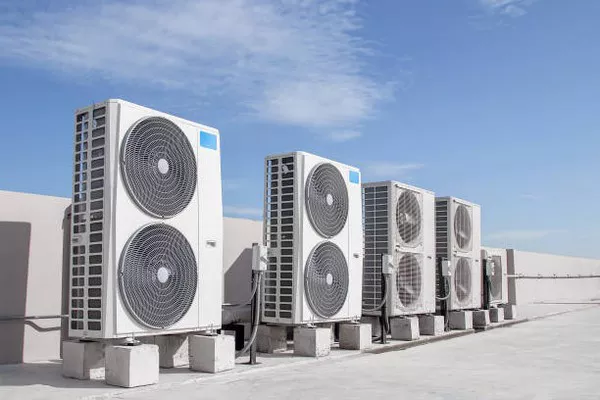Air compressors are indispensable in many industrial and commercial settings, providing essential services ranging from powering pneumatic tools to operating manufacturing equipment. One critical component that ensures the efficient operation and longevity of these systems is the air compressor filter. Proper installation of this filter is vital to maintaining air quality and optimizing the performance of the compressor. This article delves into the importance of air compressor filters and provides a detailed guide on where and how to install them.
Understanding Air Compressor Filters
Air compressor filters play a crucial role in maintaining the quality of the compressed air by removing contaminants such as dust, dirt, water, and oil. These contaminants can cause damage to equipment, reduce efficiency, and lead to increased maintenance costs. Filters are typically installed at different stages in the air compression system to address various types of impurities:
Intake Filters: Located at the air intake, these filters prevent external contaminants from entering the compressor.
Separator Filters: These are designed to separate oil and water from the compressed air.
Aftercooler Filters: Positioned after the air has been cooled, they remove any remaining moisture and particles.
Final Filters: These filters ensure the air is clean before it reaches the end-use point.
Key Considerations for Filter Installation
Location: The placement of air compressor filters depends on their function and the specific needs of the air system. Proper location ensures optimal performance and maintenance.
Accessibility: Filters should be installed in locations that are easy to access for regular inspection and maintenance.
Safety: Ensure that the filter installation does not obstruct any safety features or violate safety codes.
Environmental Conditions: Consider the environment where the compressor operates, such as temperature and humidity, as these can affect filter performance and lifespan.
Filter Installation Locations
1. Intake Filters
Location: The intake filter should be installed directly at the air intake of the compressor. This is where the compressor draws in ambient air, making it crucial to filter out large particles and debris before they enter the system.
Why Here: Placing the intake filter at this point prevents contaminants from entering the compressor and causing internal damage or reduced efficiency. It protects the internal components and ensures a steady flow of clean air into the compressor.
Installation Tips:
- Ensure Proper Sealing: The filter should be tightly sealed to prevent unfiltered air from bypassing it.
- Check Airflow: The filter should not restrict airflow excessively, as this can reduce the compressor’s efficiency.
- Regular Maintenance: Inspect and replace the intake filter regularly to avoid clogging and maintain optimal performance.
2. Separator Filters
Location: Separator filters are typically installed in the air receiver tank or after the compressor’s first stage. They are essential for removing water and oil from the compressed air.
Why Here: This location ensures that the air is cleaned of moisture and oil before it moves further into the system. This prevents contamination of downstream components and helps in maintaining air quality.
Installation Tips:
- Correct Placement: Ensure the separator filter is positioned according to the manufacturer’s guidelines to achieve the best separation efficiency.
- Drainage: Install a drainage mechanism to remove the separated water and oil efficiently.
- Monitor Performance: Regularly check the performance and cleanliness of the separator to prevent buildup and maintain system efficiency.
3. Aftercooler Filters
Location: Aftercooler filters are placed after the cooling stage of the compressed air. They are positioned downstream of the aftercooler, where the air has been cooled but may still contain residual moisture and particles.
Why Here: The purpose of the aftercooler filter is to remove any remaining moisture and particulates that could affect the quality of the compressed air or cause damage to subsequent equipment.
Installation Tips:
- Proper Fit: Ensure the filter fits snugly in its designated location to avoid leaks.
- Temperature Considerations: Be aware of the temperature changes post-cooling and choose filters designed to handle these conditions.
- Regular Checks: Regularly inspect and replace aftercooler filters to ensure they are functioning correctly.
4. Final Filters
Location: Final filters are installed at the point of use, just before the air enters the end-use equipment or process. This is the last line of defense in ensuring the air quality is up to standard.
Why Here: Final filters are crucial for removing any last traces of contaminants to ensure the compressed air meets the quality requirements for its specific application.
Installation Tips:
- Precision Placement: Ensure the final filter is precisely positioned to filter out any residual contaminants effectively.
- Compatibility: Choose filters compatible with the specific requirements of the end-use application.
- Routine Replacement: Schedule regular replacement of final filters to maintain air quality and protect sensitive equipment.
General Installation Guidelines
Follow Manufacturer Instructions: Always adhere to the manufacturer’s guidelines for installation, as different filters and compressors may have specific requirements.
Maintain Proper Flow: Ensure that filters are installed in a manner that maintains proper airflow and does not cause excessive pressure drops.
Ensure Cleanliness: Install filters in clean environments to prevent contaminants from entering the system during installation.
Check Seals and Connections: Verify that all seals and connections are tight to prevent leaks and ensure optimal performance.
Regular Maintenance: Implement a routine maintenance schedule to inspect and replace filters as needed, based on usage and manufacturer recommendations.
See Also Is McGraw a Good Air Compressor?
Conclusion
The proper installation of air compressor filters is critical for maintaining the efficiency, longevity, and reliability of your compressed air system. By understanding the different types of filters and their optimal placement, you can ensure that your air compressor operates smoothly and effectively. Regular maintenance and adherence to installation guidelines will help prevent costly repairs and ensure that the compressed air system continues to deliver high-quality performance for years to come.

